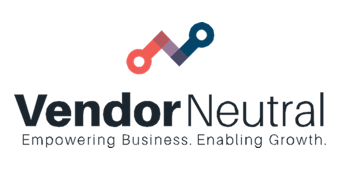
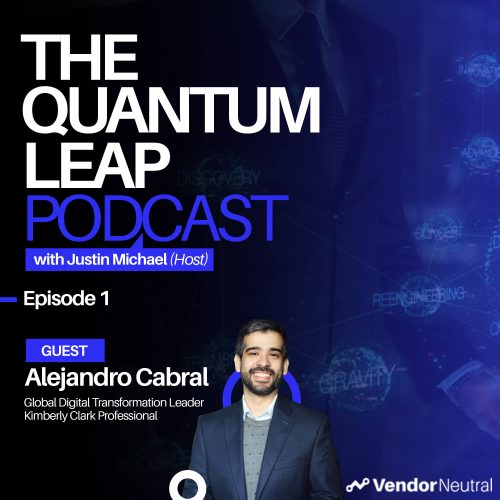

How to Strategically Transform Enterprise Organizations
Episode 1 -
Alejandro Cabral
Global Digital Sales Transformation Leader, Kimberly Clark Professional
Read Full Transcript
Justin Michael Welcome back to Quantum Leap on the Vendor Neutral Podcast in the Neutral Zone. I’m Justin Michael, your fearless host, and I Alejandro Cabral who is a digital sales leader at Kimberly-Clark Professional and is helping to transform the future of enterprise selling. Welcome to the show.
Alejandro Cabral Thanks, Justin. Nice being here with you.
Justin Michael Yeah, and where are you based?
Alejandro Cabral I’m based out of Buenos Ares Argentina right now actually.
Justin Michael Yeah, got to get down so you can bring an international perspective. I’ll kick this off. You know, we’re talking about sales transformation right before the call. You were kind of telling me how you helped sales teams and help the enterprise transform. It’s a, you know, massive question of how to do that. Can you talk at a strategic level about kind of what you’ve been working on the last few years and where it’s going?
Alejandro Cabral Right. I think you said it right. It’s a massive question. I’m glad you didn’t, you didn’t actually put the question mark behind it, because then I would be, you know, in a mess. Let me put it this way. Whenever you face transformation such as this one. So, I’ll explain that prior to COVID, right? Because that definitely changed things in a good way and in a bad way, both at the same time. But before we actually, you know, faced this thing, what we discover as company was that customers were buying differently. The market was changing and shifting. And that means basically people that bought our products made faster decisions than the ones that we could support. And they also kind of decided that maybe they could be served in a different way. Maybe people just don’t want to engage with salespeople anymore if they can just buy with one click. They don’t want to be bothered with logistics problems. You just want to know that they can buy, and they’ll get the product right. That is good and honest for you as a user, as a consumer. And it’s good to and it’s true art, honestly, for procurement managers as well. Right. So, with that reality, what we face is our traditional business might slow down if we don’t change that. And we saw it, we saw things slowing down. So, we figured there’s at least two big parts that we need to look at. One of them was culture or sales culture, which is, you know, this is 150-year-old company. There’s some culture there. And there’s some processes around that culture and so on, and then there’s a whole technology stack that supports that culture, right? So, when you look at both what you need to figure out, as you know, where’s the, you know, where’s the biggest impact if I change this or that? So, you go before you go into, you know, the change management aspect, you really just go into discovery mode. That’s what I did when I got here three years ago. I went into discovery mode. Really, really deep and I became, you know, one of those guys that no one really likes. You know, the consultant slash audit guy. That asks and how do you do this and how do you do that? And why do you do it this way and why they do it that way? And because of my role being global, I had to do that with everyone on the planet. So, it was cool, but definitely a lot of work. Yeah.
Justin Michael Where were all the places you travel to? And were there differences in crawl, walk, run or levels. I’m sure there were. Just take us on it. Tell us some stories about the process of this.
Alejandro Cabral All right. Well, yeah. I mean, to be honest, kind of when I signed in, you know, and joined this company, one of my goals was to understand global impact, right? So, my background is sales I’ve spent my entire career doing sales for technology companies. And I used to work on the infrastructure part. So, I understood how things work at that level. But understanding how users actually benefit from whatever technology you get to them, that’s a different thing. So, I really needed to get to know salespeople. And for that, I focused mostly North America. So North America, Latin America, I was all over the states, Canada, down here I visited at least five different countries, other than Argentina, of course. So that’s Brazil, Colombia, Costa Rica, Peru, and Chile as well. Just to try to understand how things happen, because you wouldn’t think it this way. But even within a region, people work differently unless there’s a really strong and absolutely global way of doing things, which is probably not true for any company, right? But then I do need to work with Europe and Asia. I couldn’t make it there yet because of the size of the markets, but I did engage with peers in each one of those regions. So, I actively work with people in Singapore, in Australia, in China, of course. Let me see if I’m missing anyone. Oh, yeah. Poland. Right. Yeah. I think that is Poland, right? Yeah. And I got to talk to people all over the globe. Anyone that’s not on this side of the planet. I got to spend a lot of time on Zoom very much, you know like you would. And I’ve seen differences not just I mean, forget about the processes and the technology because some of that is global. But the way of conducting business changes, you know, whatever you go, there are regions where you just can’t send anything but an email to people. You can’t send, for instance, a video greeting because that’s offensive. Then there are other people that would not respond to an email. They will not respond to a text message. They only use WhatsApp or Telegram. That sounds funny when you put it like that, but think business, think salespeople, distributors, think, you know, procurement people, they all just handle stuff through WhatsApp. So, the actual question there is, is that technology that’s supporting us or it’s actually creating a risk for us? So, we had to go through discovery of all kinds. Because if everyone was doing things differently based on what the market needed, not from a process perspective, right?
Justin Michael That’s a great explanation. So, I actually am a proponent of WhatsApp because I had some work and some consulting I did in Tel Aviv and the whole country is on it. There are 20 million users of WhatsApp, all of Tel Aviv technology is on it. I couldn’t find a single person who wasn’t, and that was a fast, real-time component. If you think about some advice for our listeners of a top two or three things, maybe strategic, maybe tactical that they can do to embark on a journey of transformation digitally as sellers. How would you start with that?
Alejandro Cabral Well, I would say the first thing you need to assess is change management. That’s the part where most people know that most people ignore until it’s kind of late. What I mean is forget about the manual, or the change management book, if you will, when you decide to change something in a business, what you’re doing is changing people’s habits, as well. You’re going to have an impact on the day to day of everyone in your company. And regardless of the fact that transformation sometimes means change. Sometimes it just means you need to do things differently, and that’s not necessarily change. So, when you go into assessing any kind of transformation, the first question you need to ask yourself is, is this going to change anything, yes or no? And if it is going to change energy, then you need to assess, you know, who’s going to be impacted, the most impacted, if you will. Right. Right after. Then that’s when you start discovery. But before you do that, you know, of course, if you’re pursuing a transformation, that’s basically because there’s a situation or a problem or a problem that needs to be sold or sorted out. And it’s why you’re transforming. So, when you do get to the discovery point, I would say try to step out of the obvious. So, if you’re just trying to figure out how to sell more, try to step out of that sales part and go and figure it out, for instance, your logistics or your finance or your marketing. Right. Don’t just fall because in sales, because you will only get so far. You need to understand, you know, the broadest impact of that transformation. You’re going to run if that makes sense.
Justin Michael Yes. So, we’re talking about sales. But I’ve always really taken a keen interest into marketing because I feel like individual sellers are almost micro, they’re almost micro marketers. They’re stewards of the brand. They know they’re not just static entities. Now it’s dynamic. They’re content producers. They’re curators. How have you interfaced with the large marketing organization to have alignment there? Sort of an overarching theme. But in big organizations, how can sellers improve that? Is that part of the digital transformation? Is marketing, informing, selling to sellers? Right. Right. You’re mentioning these new mediums like WhatsApp would. There’s a lot of governance around what they can and cannot do in social media or what they can write. How has that been part of the story of how you’ve been shaping things and where you’re at? And also, like in the marketplaces that you analyze.
Alejandro Cabral All right. So that’s a great question and I would say I mean, I’ve always been in sales and there’s always been kind of a rift between the sales and marketing, which is why I kind of made it. You know, my, one of my life goals, as I was working for sales, was to kind of ignore that and see if we could actually pull marketing in. And I was quite successful doing that in my previous job. So, when I came here, I was actually surprised to see that sales or marketing work quite well together. So just to put it one way, there is a lot of collaboration here between teams. Everyone’s really on the same page. There’s a lot of, you know, interaction between marketers and sellers.
Alejandro Cabral Now, that being said, this is a challenging age for anyone. I’m forty-two years old. I never thought I would see this. But I can tell you now going through it, it is quite amazing. I mean, when I was in college, what I was told was, you know, marketing is the actual sales piece. Right. Sellers are just the people that execute. But the way to get it into people’s minds and into, you know, a company’s mind is to properly market a product. Right. That’s what I was taught. And what that meant was that there is this living solid team that’s in charge of communicating everything. Now, the minute social media came in and you can’t create an account for yourself on any of those platforms, that changes because, you know, the company can’t quite tell you what to do with your own profile and your own content. Right. So how do you harvest that? How do you pull them in? You create advocacy programs. We’re great at that.
Alejandro Cabral We really, really think that you know, it’s quite okay that following proper guidelines and recommendations from both marketing and legal, anyone in the company is OK to just go out and share their opinions as long again as they go through those guidelines. We really think that creating original content is great. You know, as long as it’s along the lines of what do our customers need and what does a company need? But you’re also more than welcome to just do your own thing because what the company understands is the more exposure you as an individual as long as you are, you know, an employee of the company. You can be an advocate. And that’s a good thing. So, we actually empower people to just do their own thing and share content on their own. And we also, of course, give them content that marketing prepares thinking on our customers. That’s another thing that’s done great. Really, really great here. And to be honest, I did not see that in the IT industry. I spent 20 years there. And I didn’t see it once but here, marketing, really thinks about the consumer or the user, if you will, the people buying, the chooser we call it, the actual person deciding to buy our solutions. So, every piece of content we get from them that we would share comes with that in mind. And every piece of content that our own employees, not just salespeople, but employees in general, the aid, as long as it’s meant for our customers. We are OK with that. So that kind of makes sense to us.
Justin Michael That’s a great question. I think part of this journey that I hear, like Marc Benioff from Salesforce talk about, is the customer, the age of the customer, customer centricity. Don’t sell the way we want to sell in the sales process, let’s reflect the buying process. This is another huge Pandora’s box question. But, yeah. Is that part of how you transformed it? Is it part? Do you see a change in the way customers are buying that you’re meeting that need? Some people, you know, hey, humans haven’t changed in a hundred years. It’s the same thing. We have this digital, digitally aware, savvy millennial generation, like how are we adapting? There’s a, you know, a CSR component of corporate social responsibility and the mission driven component of engaging with brands and selling. That’s kind of a couple of different focus of a question. But the main one I’m asking you about is the selling journey in the buying journey and how you know it goes together.
Alejandro Cabral I’m a big fan of that, you know because I keep hearing the customer journey and my CX colleagues would die if they hear this. But I think that’s just not it. That’s just one side of it. Right. I spent most of my life on the sales side, and I know this a journey for you, too. We only instead of calling it the sales churn and we call it the sales process. Right. So, when you do that, people just think that it’s all about your pipeline and just getting, you know, an opportunity from A to C right, you know, discovery all the way to realization and then closed won.
Alejandro Cabral That’s wonderful. It was just like that. Right. But the truth is that the customer journey and the seller journey and just the two sides of the same coin. Right now, the one thing that I’ve seen change this past year, and this goes for any company, for anything at all. Everyone actually is going through this is customers now have power over sellers or companies like never before. Right. So, it’s not, it’s no longer about. Me as a salesperson, adding value. What about what they really need? Because they say that’s kind of the thing. Right. I always refer to this in a very simple way. There was a time not long ago, where do you as a salesperson, were actually invisible. You had no face. You had no body; the customer didn’t know you until you actually knock on the door. The minute they open that door, you both met. But you probably had some leverage. You had done your research. You had some information. You knew how people like that person buy. You had insights. Right. The customer, though, they couldn’t see us. Mean they would just open the door and face us whatever we looked like. Right. That’s no longer a thing. You cannot remain invisible. So even if you are new to them, your company and your product is not. It’s out there. They can find about it. They can see about it. They can find other people’s opinion on it. That’s what puts them right in the middle. They get to decide if they’re going to buy, keep or recommend your solution even before you know that they’re about to buy. Right. That’s why it’s so important to keep them right in the center, and we want to accelerate sales, which is kind of my mission. The only thing you can do to accelerate is put that fact in front of salespeople, because what we say is people are consumers, too, right? So, we are really buying like that. Only when we put our sales hat on, we don’t realize we need to accelerate. Right. So that’s kind of my mission here.
Justin Michael I totally understand, because as a consultant, I’ve gone out and looked at, you know, Web site software and different billing systems. And I find myself fitting into the stereotype now. 75 percent through the buying journey. Research, actually just asking friends in mastermind groups. Hey, what do you use for that? What do you do for this? At the speed of word of mouth or word of mouth. Right. It’s the brand recognition, people I trust. Hey, if it’s good enough for you, tell me what to use. You know, so there’s all this digital movement, movement behind the scenes in slack and in quiet DM’s, direct messages and channels. Referrals are very big. One of the things I like to ask is the future of outbound communications as you see it because what we’re seeing right now as executives are getting 250 messages a day, a thousand messages a day. How can we be more thoughtful, tailored, and personalized as sellers to leverage the digital mediums in a non-abusive or exploitative way? I mean, I just kind of feel like sending tens of thousands of e-mails and calling it sales is not really the best practice. How do you manage it? I’m sure you have giant drip systems and CRM’s and data platforms it’s probably like a massive thing to tackle. I’m sure you have thoughts.
Alejandro Cabral Yeah. Oh, I have more than thoughts, but I’m sure I’ll share something pretty right. I have two hats right now. One of them I work for Kimberly-Clark Professional as a Digital Sales Leader, but then I also run my own business. So, I’m also a consultant for some companies and I’m a public speaker. Here’s what I can tell you, these days. everyone is a public speaker, it’s as easy as that. Everyone that has a story, even if they don’t have a story, they are a public speaker. Just to give you facts. I’ve been using LinkedIn for the past 18 years. That’s the longest. LinkedIn has been out there 18 years. Right? I’ve been there and I have access to most of the new stuff. They get out before a lot of people before at least 99 percent of the people. Right. Because I’m very, very close to them and I work my way into the right context here. So, I get to test stuff. I get to do stuff. That’s awesome. That’s fun. But hey, I no longer the only one. There’s a lot of people if I go to LinkedIn right now, hundreds of people are doing LinkedIn live’s. Right. If I tried to write an article, thousands of people are doing that, which is kind of silly, but really engaging video. A lot of people are doing that on LinkedIn. So exclusively B2B right. Now maximize that and multiply by tens of thousands and you’ve got Instagram, you’ve got Facebook. Right. So, it’s really hard getting attention, you know, and not just that once you learn to position yourself. It’s really hard to get into that person’s email, which is, you know, phone so they can pay attention to you because guess what? There’s so much competition for everything, right? Again, everyone’s a consultant. Everyone’s a speaker. So how do you go over that? Well, here’s what I can tell you. You will not beat your competition. You will not get that deal if you do exactly the same that everyone else is doing. And right now, being an influencer or being hot online, that’s not it. That just helps you for one thing, it helps you bring attention to yourself. It helps you drive traffic to your website. Get people in front of those forms that you want them to fill out, right? Now this thing, especially with COVID, right? Especially since COVID hit this thing about getting spam. This is a really old problem, like 20, 30 years old problem. Right? It’s really bad right now because it’s not just e-mail it’s your inbox in any given social platform. It’s your phone. It’s everywhere. So if that’s what you’re going to do, what I would say is the first thing you need to realize is that if you’re a salesperson, you need to know who you’re talking to and what I mean is just before you get to the name and last name, go and prospect and profile as much as you can. And build your buyer persona template, if you don’t have that, you’re gone. I mean, if I know I’m talking to see CXO’s of high technology companies that say, I don’t know, the Fortune 500 index, right? And I know I want SAP to buy it from me. Right. Or Microsoft or IBM, and I’m talking to Sales VP’s there. I know what those guys want. And I know what those guys need because I have my buyer persona template’s or charts for each one of them. And I only get too, I only got too that after prospecting a lot after trying to figure out where do these guys click. What is it? You know, that works for them. What do they share and why? And based on that, the next step is customized as much as you want. I’m really all in for consultative selling, to be honest. So, in B2B, highly consultative the more you customize, the better if you are in B2C and you’re looking for volumes, you can just do whatever you want because you never get more than 3 to 5 percent engagement rate right? Now when you have that, because I, I don’t, and probably this is true to you too. Right. I don’t sell anything that’s, that cheap or that repeatable. So, I’ll never be a millionaire, I guess, right? But I do sell highly complex processes. And even when I go on stage because people just hired me to be a public speaker, I do have a process to understand what’s expected out of me. So, I can’t just go to an H.R. manager or, you know, someone that’s hiring a public speaker. I need to talk to a bunch of people. So, I do spend a lot of time prospecting and understanding. Profiling means that understanding what they need so you can actually customize your proposal as much as you can. So in a nutshell, build your buyer personas so you know who you’re talking to, spend as much time as you can researching those people that you know you want to, you know, that they come to you and buy and only then start customizing your messages. Right. It’s the other way around. People usually just go. Just start by. You know what? I’ll just build this awesome, and cool website, and then they go to AdWords and try to do a ton of things and customize the ads. They get all of this traffic and no one completes that form. That happens for a single reason. You’re thinking about yourself and about your product. You are not thinking about what they need. So, make it about them. That’s probably the best advice I can give.
Justin Michael That’s great. Actionable and practical advice. It’s interesting, like the journey you’ve taken from a seller to a sales leader to a speaker. There are probably a lot of people listening to this podcast who are wondering how to do that, because there is value in some ways on Twitter, for example, that people are even more well-known than the brands. You look at Amazon. You think of Jeff Bezos. You look at Facebook. You think of Mark Zuckerberg and Sheryl Sandberg. So, the question is, should sellers become a channel, become a brand? Should they, should they get into the maelstrom that you described of all of this content generation? If it’s thoughtful enough and it’s at their ICP, like you stated it, they nailed the persona. Maybe they can do that in a quality way where it is tailored. So, there’s mediums, right? Like creating a custom video where certain ways to tailor multimedia people, video messaging, short videos. Right? You’re saying you’re testing stuff on LinkedIn. Then there’s this new stories feature that feels very, very Instagram to me. I’m trying to say I have no idea what I’ll do. What’s your advice to, you know, the other sales leaders out there on taking that journey? Some best practices, I think, because we’re talking about digital transformation. I think people are, there’s too many choices. What should I do? Should I. OK. Do I want to blog? Does every seller have a content strategy? Right. Like what are some ways to Ockham’s Razor this or 80 20. So, they know what to do now?
Alejandro Cabral Yeah. Ok, that’s a great question. First thing I would say be your own brand. That’s probably the best advice I can give you when starting your journey into this. Be your own brand. I mean, forget about who you’re working for. You know, this thing, that saying that says people buy from people. We’ve seen that in so many postcards by now, right? But I think that’s, that’s it. I mean, I was trained and I’m pretty sure thousands of people I know were trained on how to be a good listener. So, you could actually adjust your pitch and then propose, you know, just the space to work with your customer on building a solution. Right. We’ve been doing this for a long time. Way before agile became a cool thing, we were doing that but what we were not trained to do was to, you know, shine as a person before you would shine as an employee. And that’s important because the whole people buy it from people means I like to connect with a human being rather than just weird, you know, a brand. But we never stop selling, right. We could go back to Glengarry Glen Ross and just go you know, hardcore. And they said, you never stop selling, right? Always be closing. Stuff like that. But in all honesty, right now, people buy from people more than ever. So, it’s really important that you become your own brand. That’s step one. Now, the part that I like about becoming your own brand is that if you’ve been out there for some time, you have enough experience to tell a story with that brand. I thought about that. Right. So, if you think about yourself as a brand, you need to think about where you’re coming from, what you’ve achieved, what you’ve learned, that’s your past, that’s who you are, and then what’s your value statement? What can you do for people? Right? So why would I buy from you? Not from the company, not your product. Why would I invite you into my business and talk to you about my problems? Right. Why are you that you expect me to do this, right? People really want to hear that you are kind of a thought leader. If you want to actually be one of those. If you actually want to be seen as someone who’s to be trusted because of your experience, your insights, and your mission, you need to build it first. So, after you build your brand, you need to figure out what your message is, right? What your actual value proposition as a unique individual is. And there’s no way that if you do that right, you won’t get noticed right? Now after you do that, then comes the hard part, because you would say just going deep and figuring now all of this thing is hard. That’s not hard. It might be challenging, but it’s not hard. The actual hard part is to keep doing it. Don’t just stop because you not getting engagement. Keep doing it. Right?
Justin Michael Consistency is, yeah, the goal for people, right? Every day, every post. I’ve noticed the LinkedIn algorithm lately has changed quite a bit. There’s something like dwell time. You see these posts that are, you know, thirteen hundred words, one sentence all the way down. I was posting way too many times per day and back that way off. It seems like LinkedIn is becoming more vibrant, but there’s been different changes since Microsoft took it over. For the leaders who are listening in who are in the sales function, a lot of these are VP’s is a lot of people listening to this podcast are in leadership, I think but there’s also a lot of frontline managers and IC’s. What’s the low hanging fruit? Should they do LinkedIn, Twitter? Should they get a blog? Is it curating things from the company page and then putting their opinion? They might just want to take a couple of steps forward. You’re obviously going into becoming a speaker. You’re doing it all but when you coach people on this, where should they spend their time now for like 2020, 2021?
Alejandro Cabral OK. So, the short answer for that is you want to spend time wherever your customers are. So, if it’s B2B or it’s B2C, that’s the first thing you need to figure out. If it’s B2B, and it’s highly consultative, you definitely want to do LinkedIn. If it’s B2B mightily to not that much, it’s it might be Facebook and Twitter. I would leave Instagram entirely for B2C although sometimes I get a few calls from people that just watch stuff I do on Instagram. If you do want to spend time on LinkedIn, I have a three step thing that’s really, really easy. Right. First thing, focus on your profile, right? You have no idea how many bad profile pictures I’ve seen in the past week. Just week, right? Because I do a lot of coaching for salespeople here. So within and without the company, and the first thing I noticed, and that’s what your eyes will go as long as you can see, your eyes will go to a face rather than an image first. So, get a good profile picture, but that’s just the beginning of your profile. You need a good profile. If you Google how to create a good LinkedIn profile, there’s tons of advice there. Just Google it and figure it out, what do I need to do to get a good profile? Because that’s how you get attention. The second one, the second step is, focused on your network. Curate your network. It needs to be healthy. What I mean by that is just don’t go nuts inviting anyone to join in. Invite people that you can get value to. Try to connect with customers, potential customers, partners, forget about friends, and family. That’s all fine, but that’s why you have Facebook, right? Or Instagram or whatever. Just focus on customers and partners. And the last one is once you have a good profile and a network that’s growing and for salespeople listening in B2B, that’s about 1000 connections. Right? If you have 500, that’s the baseline. I would say a good network is above 1000 connections. Once you get that network, that’s when you want to focus on content. Don’t just go and reshare content that’s on the company page. If you want to do that, that’s fine. That’s going to be helpful for your company and eventually for you but remember, people are connecting to you because you’re a human being. So, share something with insights, If that’s original content, or that’s company content, that’s fine. Don’t overshare. So typically, three times a week. Two times a day. That’s it. For starters, that’s more than right. Of course, I want to touch on something you said that was important. The algorithm. That’s a pain in the neck for everyone. I don’t think the LinkedIn guys understand it either. It just goes back and forth. It changes. It decides to promote your content, but then it goes away. You maybe, you’re really lucky once and then you’re lucky anymore. And then you see these people producing content that’s not great, but it gets tons of attention, right? So, all I can say is what that thing is really looking at is how fast people interact with your content and who those people are. It is not the same when people that never interact with you engage with your content as to when people that you are connected to and always engage with you, keep doing it right. That changes, I would say, every other month or so. So just keep in mind that you produce content for those that need it, not just for you.
Justin Michael This has been great. I’ve learned so much. I just wanted to ask one more question because it’s really about quantum leaps, about the future. Since we’ve really focused a lot on technical advice today on becoming digitally transformed as a seller. But the beauty is a lot of the advice you’re sharing is one or two years ahead. I think the enterprise is in some ways catching up. There’s people in the enterprise that are disruptive. Last, question is, as we kind of end off is, where do you see the future? The next one to two years. You can even extend it out the next five years. This might be an innovation comment. It could be about technology stacks, people, the customers. When you’re thinking of your work and you’re thinking toward 2022, 2025 where does your mind go? You could say to me, I don’t think that far out. I’m really just focused on, you know, utility now. But where, where’s the stuff going? We want the hoverboard, the flying car. We don’t have that. Is it just, is it the stuff you’re saying? Is that the basics? Is it just the enterprise getting this digital stuff, kind of catching up to the startup ecosystem, disrupting itself? How do you see it playing out?
Alejandro Cabral That’s a good one. You know, I think we are not done with the transformation. No one is. I mean, just take a look at the big, big companies. I mean, well, we can probably just forget about space X, right? Because they innovate every single day, right? Or Lego. They do that all the time. Big companies that are used to innovation. I don’t think that speaks for more than, I don’t know, 8, 10 percent of the entirety of the enterprises, large enterprises that are out there. I think a lot of the big, big companies still need to go through this transformation. Colgate has accelerated the need because you change, or you die right now. I’ve been hearing that message for the past five years and it’s only became a reality right now. If you don’t change, you will be gone in the next two years. Now, I’m really looking forward to that you know, future state where companies are almost done with a transformation, meaning they understand what technology really is for. So, take CRM, for example, right? Companies understand that having a CRM is not good enough. You can pay Salesforce; you can pay Microsoft. You can pay anyone you want. Having a CRM, it’s not enough. You need the human capability behind that, and you need a proper A.I. to power it up. You need the good logistics to go with that and you need exceptional customer service. So, it’s really about understanding how that transformation is going to impact what I see it’s doing right now. So, what everyone does with all of this technology? I see a big leap that we never anticipated for technology companies again is, you know, how things were becoming a bit static for big ones like Oracle, IBM, VM Ware, Dell Technology, all of those companies it was becoming just kind of static and now things are changing and the technologies tech is becoming so, so powerful again. So, I see a rise in technology again in the I.T. area, especially, only. they will not be called I.T. anymore. They might be, you know, working together with CX and teams such as that one, and they might become something different. I do expect change in technology. I expect a well announced change in the way we train and enable employees, so human resources is changing everywhere. Sales enablement is changing everywhere, I see a lot of people going back to basics, but I think we need more than the one on one. You know, I think we’re all ready for some more hardcore stuff when it comes to virtual selling when it comes to servicing customers without visiting them. This huge crisis has made that evident. So, I see those changes in technology, going hand-in-hand with changes in the way we prepare people for their work. I do see, I do think that that transformation is only kicking off right now. I don’t think we’re not. That’s probably going to say anything, you know, between two to five years from now. So, it’s exciting because we do see all of that. I mean, you’re right, we don’t have the hoverboards, but I never thought in 2021 I would be able to say something like this. I don’t think I’m going back to the office when we open up again. Because I mean, I have proven to myself and to my manager that I can work from home and be twice as productive as I was before. So, I don’t think that’s a necessity anymore. And we didn’t know that was happening. Right?
Justin Michael Thank you so much, Alejandro this has been an amazing episode, where can people find you? Before we sign off?
Alejandro Cabral Hey, I’m on LinkedIn. You can find me there. There’s only one with my name and you will find me there. You just need to look me up. I’m on Twitter and you can visit my Website actually, as well.
Justin Michael Awesome. Thanks for being on the show. Totally great meeting you. Great podcast.
Alejandro Cabral Thanks, Justin. It was great talking to you. Have a good one.
Justin Michael Thank you
-
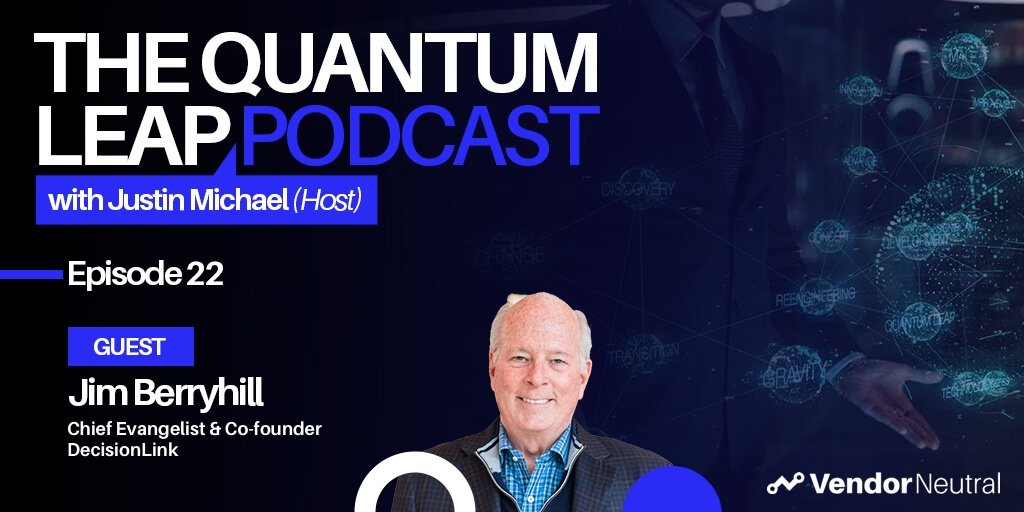 4 Opportunities For Massive Growth In Customer Value Management4 Opportunities For Massive Growth In Customer Value Management
4 Opportunities For Massive Growth In Customer Value Management4 Opportunities For Massive Growth In Customer Value Management -
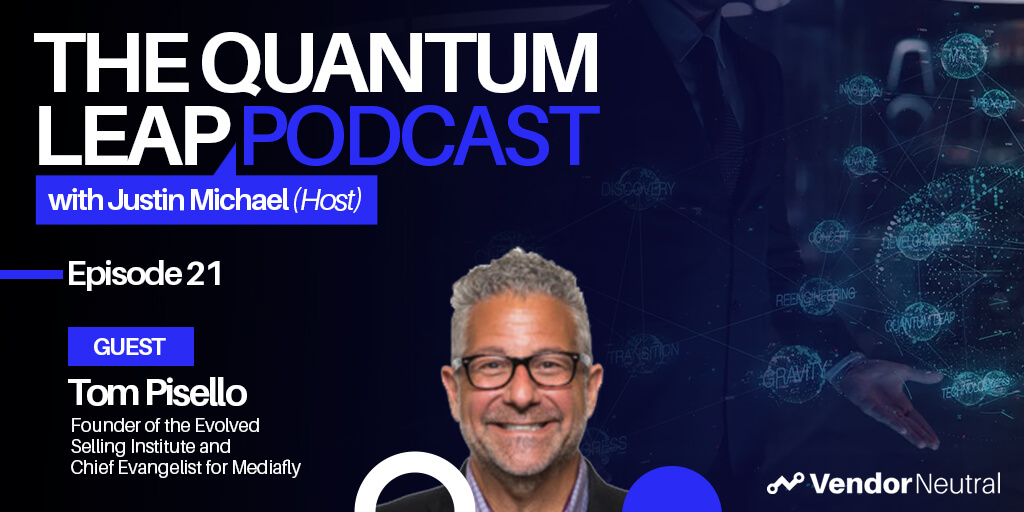 Closing the Customer Engagement Gap | Showing A Clear Case of ROIClosing the Customer Engagement Gap | Showing A Clear Case of ROI
Closing the Customer Engagement Gap | Showing A Clear Case of ROIClosing the Customer Engagement Gap | Showing A Clear Case of ROI -
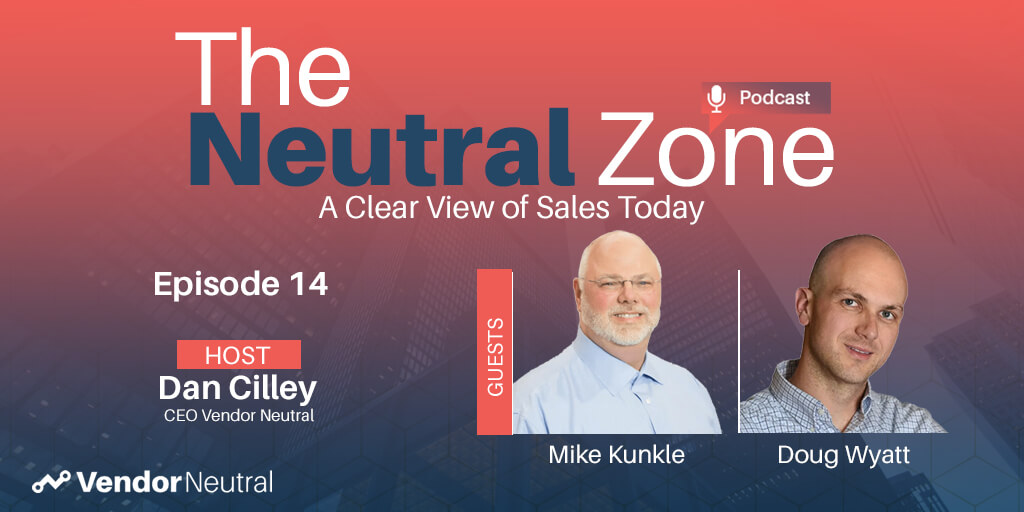 Buyer-Centric Selling | Modern Sales Foundations Virtual Sales TrainingBuyer-Centric Selling | Modern Sales Foundations Virtual Sales Training
Buyer-Centric Selling | Modern Sales Foundations Virtual Sales TrainingBuyer-Centric Selling | Modern Sales Foundations Virtual Sales Training -
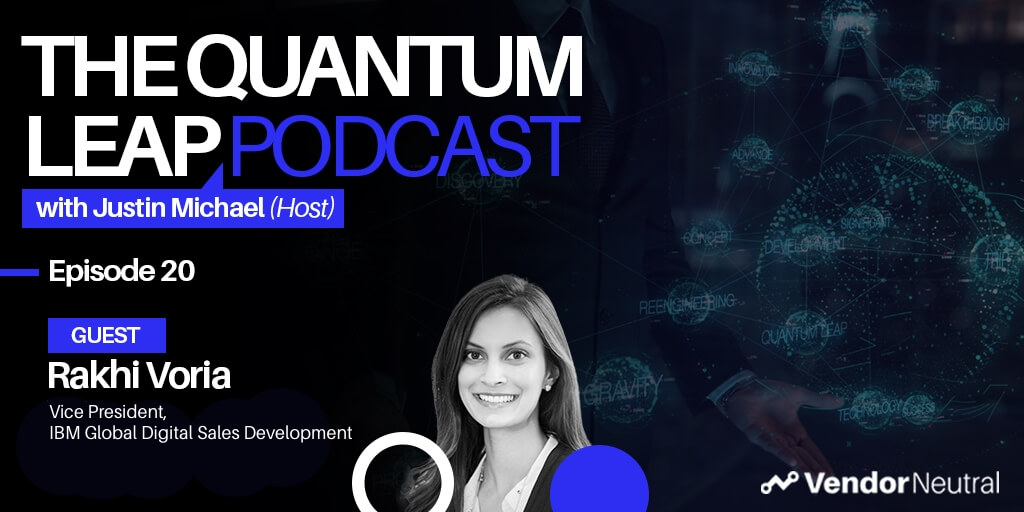 Biggest Trends in Digital TransformationBiggest Trends in Digital Transformation
Biggest Trends in Digital TransformationBiggest Trends in Digital Transformation -
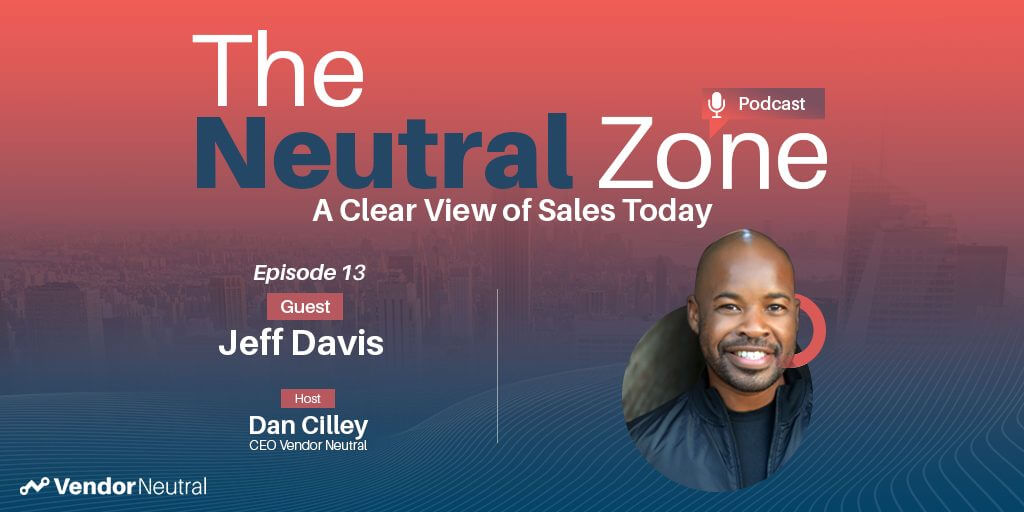 Focus on These 3 Things for Sales Technology AdoptionFocus on These 3 Things for Sales Technology Adoption
Focus on These 3 Things for Sales Technology AdoptionFocus on These 3 Things for Sales Technology Adoption -
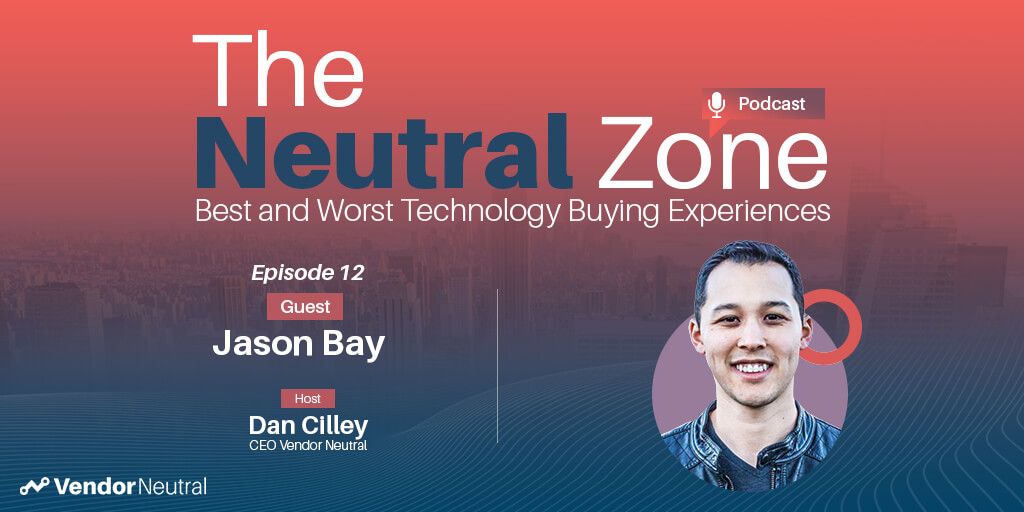 For Sales Technology Buyers A Customer Success Strategy is KeyFor Sales Technology Buyers A Customer Success Strategy is Key
For Sales Technology Buyers A Customer Success Strategy is KeyFor Sales Technology Buyers A Customer Success Strategy is Key -
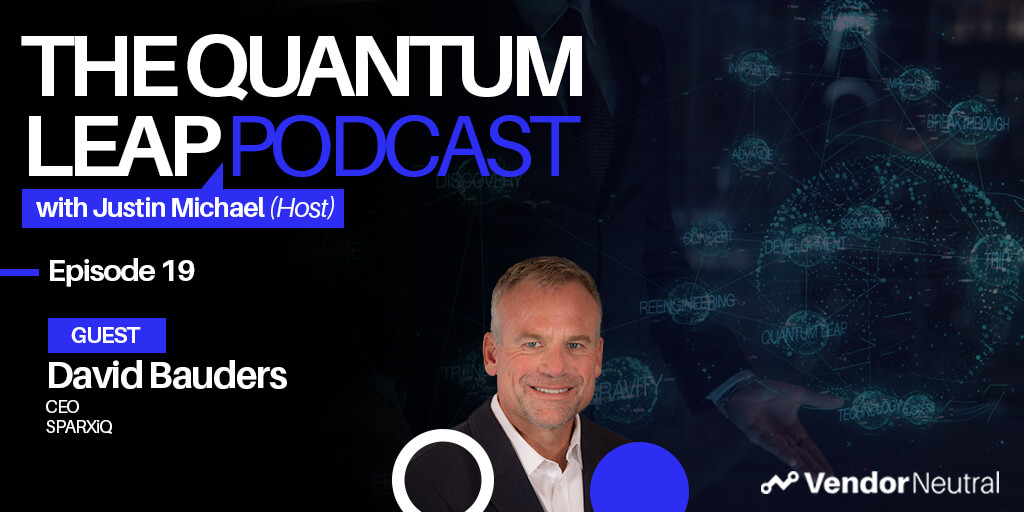 The Future of Sales TrainingThe Future of Sales Training
The Future of Sales TrainingThe Future of Sales Training -
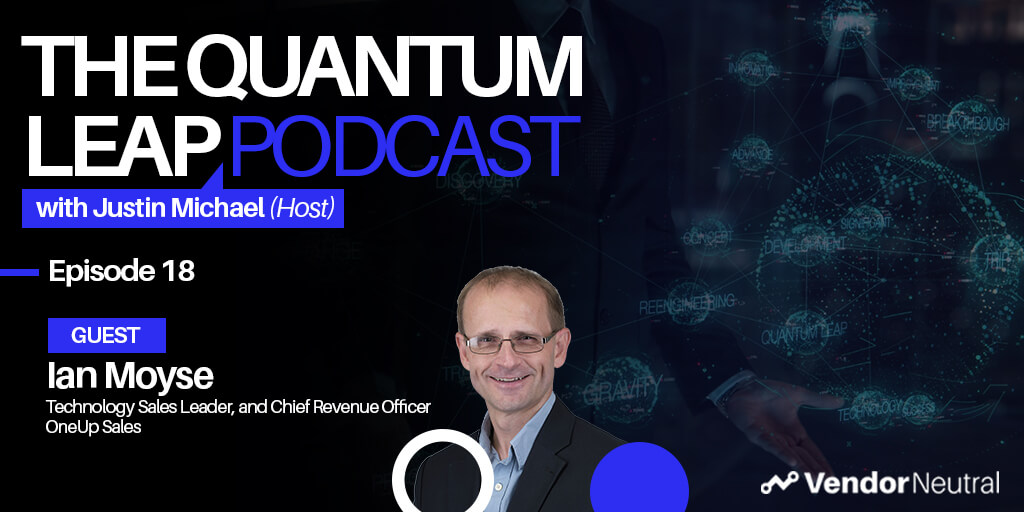 Sales Enablement to Generate Revenue in 2021 and BeyondSales Enablement to Generate Revenue in 2021 and Beyond
Sales Enablement to Generate Revenue in 2021 and BeyondSales Enablement to Generate Revenue in 2021 and Beyond -
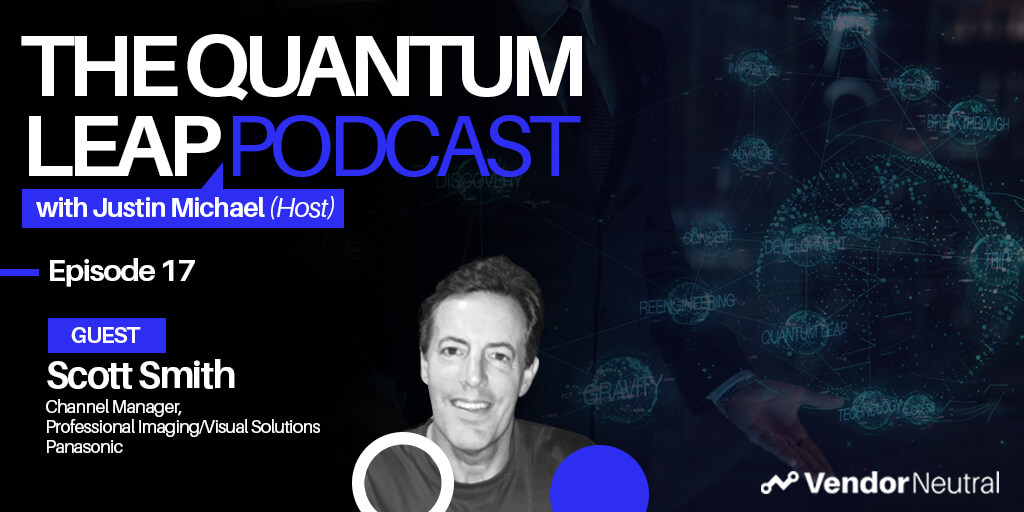 Leveraging Sales Technology in Enterprise Channel Sales | Start by identifying the problems you’re trying to solveLeveraging Sales Technology in Enterprise Channel Sales | Start by identifying the problems you’re trying to solve
Leveraging Sales Technology in Enterprise Channel Sales | Start by identifying the problems you’re trying to solveLeveraging Sales Technology in Enterprise Channel Sales | Start by identifying the problems you’re trying to solve -
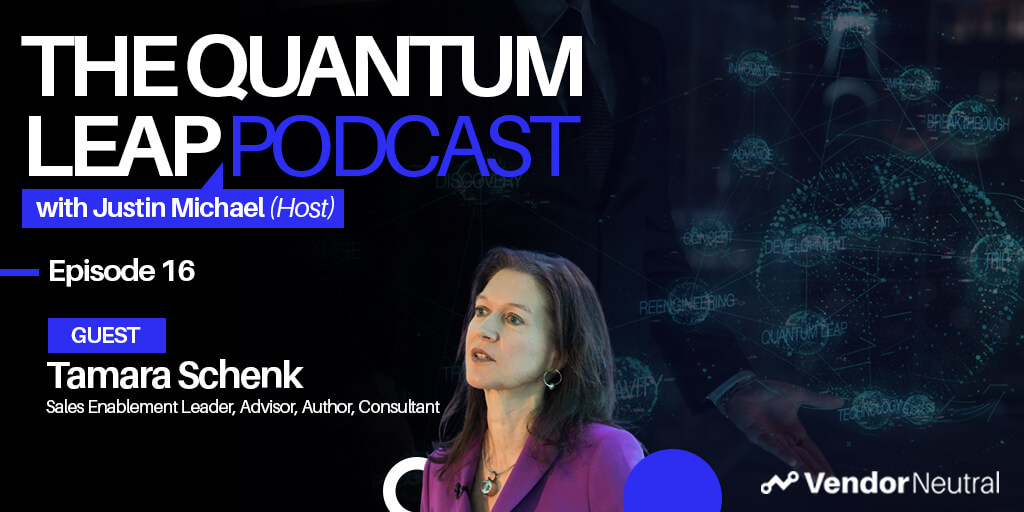 The One Question to Ask Before Sales Technology Implementation to Ensure the Success of Your Enablement InitiativeThe One Question to Ask Before Sales Technology Implementation to Ensure the Success of Your Enablement Initiative
The One Question to Ask Before Sales Technology Implementation to Ensure the Success of Your Enablement InitiativeThe One Question to Ask Before Sales Technology Implementation to Ensure the Success of Your Enablement Initiative -
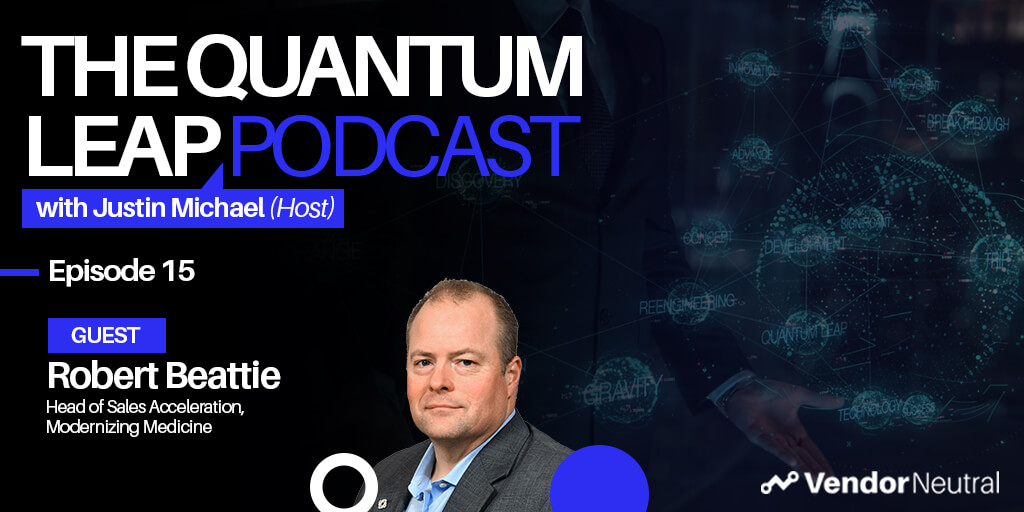 Digitally Enabled Enterprise Sales - Technology & Skills You'll Need in 2025Digitally Enabled Enterprise Sales - Technology & Skills You'll Need in 2025
Digitally Enabled Enterprise Sales - Technology & Skills You'll Need in 2025Digitally Enabled Enterprise Sales - Technology & Skills You'll Need in 2025 -
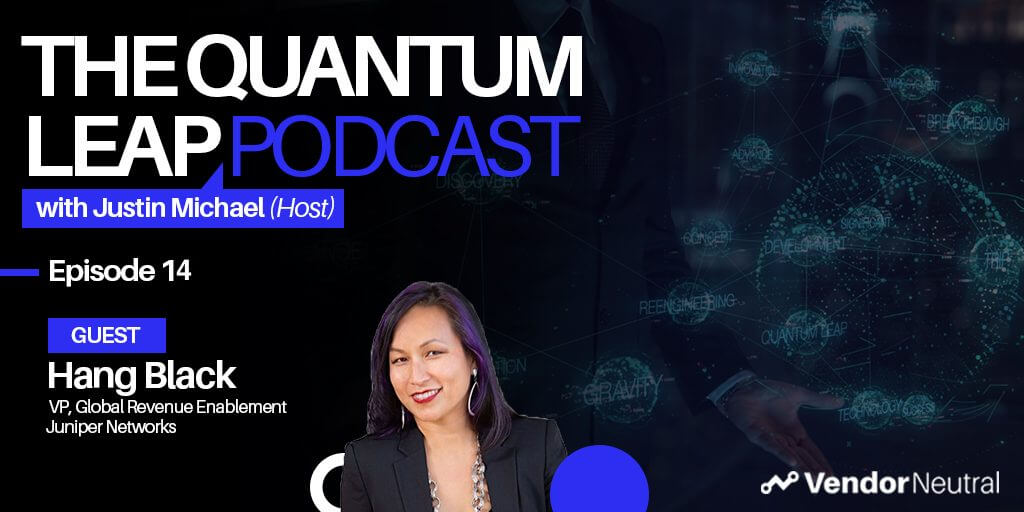 A Look Into The Future of Sales EnablementA Look Into The Future of Sales Enablement
A Look Into The Future of Sales EnablementA Look Into The Future of Sales Enablement -
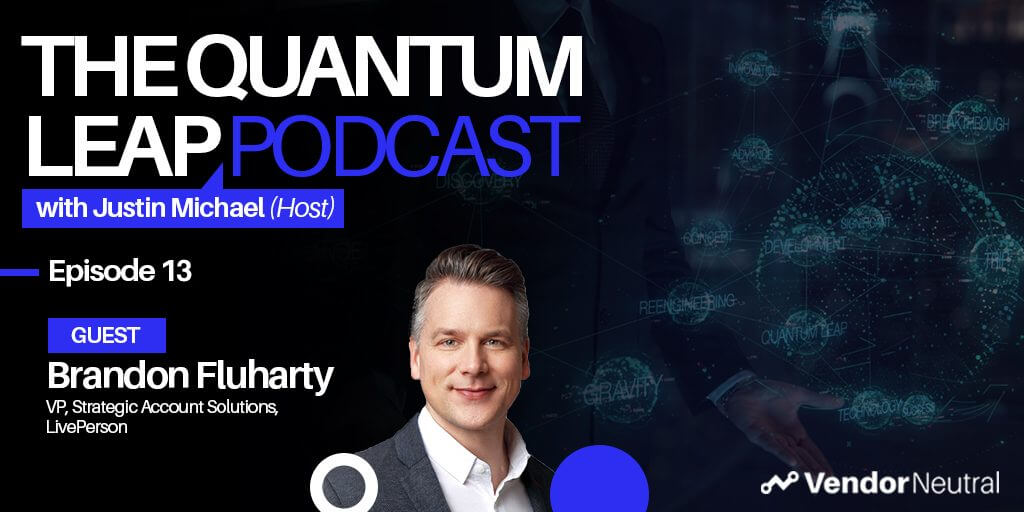 3 Ways Sales Technology will Shape the Future of Strategic Selling & Enterprise Sales3 Ways Sales Technology will Shape the Future of Strategic Selling & Enterprise Sales
3 Ways Sales Technology will Shape the Future of Strategic Selling & Enterprise Sales3 Ways Sales Technology will Shape the Future of Strategic Selling & Enterprise Sales -
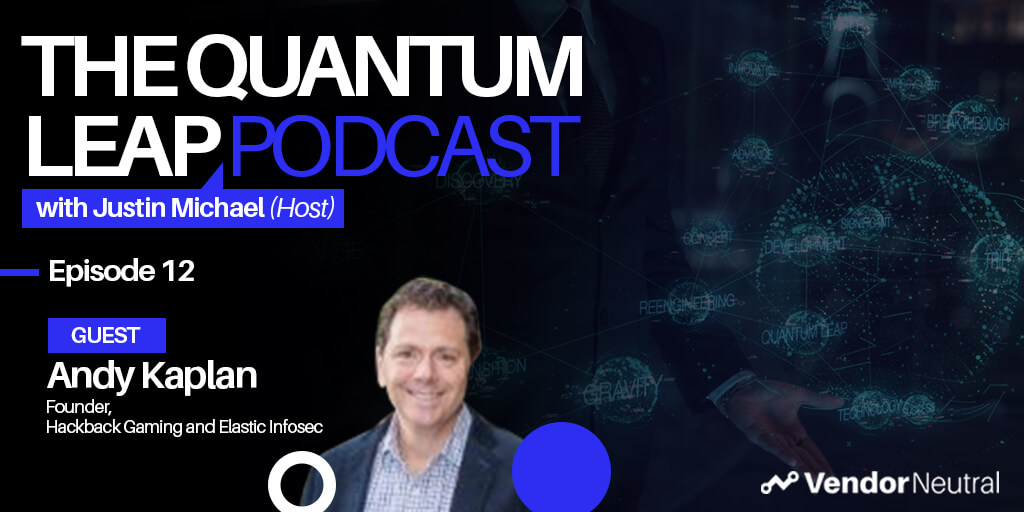 Future of Sales in the EnterpriseFuture of Sales in the Enterprise
Future of Sales in the EnterpriseFuture of Sales in the Enterprise -
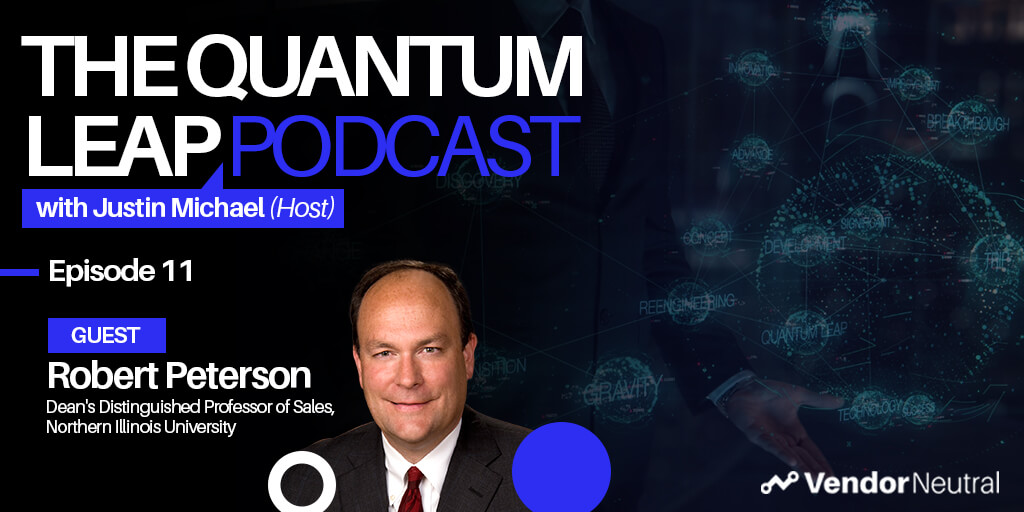 Developing the Revenue Leaders of TomorrowDeveloping the Revenue Leaders of Tomorrow
Developing the Revenue Leaders of TomorrowDeveloping the Revenue Leaders of Tomorrow -
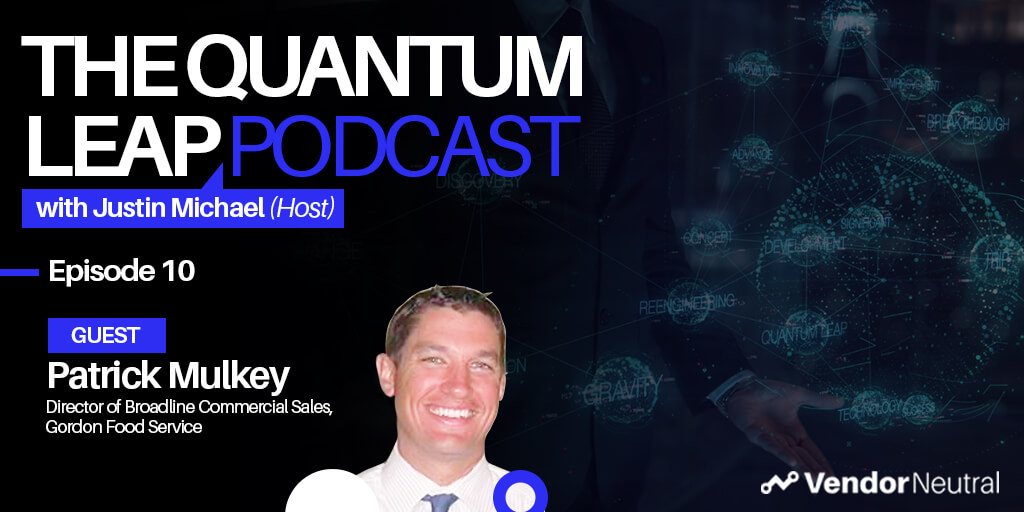 Evaluating and Updating Your Enterprise Sales Technology StackEvaluating and Updating Your Enterprise Sales Technology Stack
Evaluating and Updating Your Enterprise Sales Technology StackEvaluating and Updating Your Enterprise Sales Technology Stack -
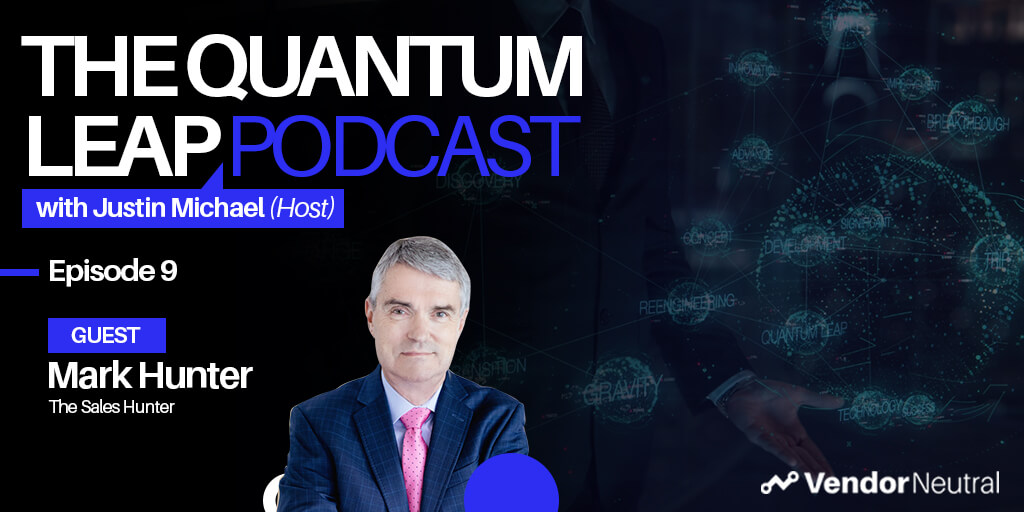 How-to Connect With Enterprise Buyers When Selling From HomeHow-to Connect With Enterprise Buyers When Selling From Home
How-to Connect With Enterprise Buyers When Selling From HomeHow-to Connect With Enterprise Buyers When Selling From Home -
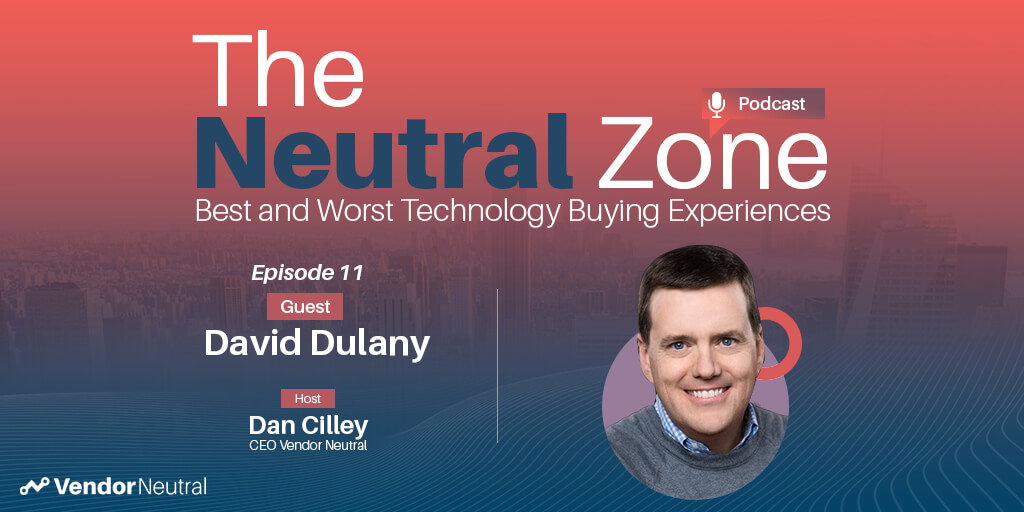 Is the Sales Technology Buying Process Over Engineered?Is the Sales Technology Buying Process Over Engineered?
Is the Sales Technology Buying Process Over Engineered?Is the Sales Technology Buying Process Over Engineered? -
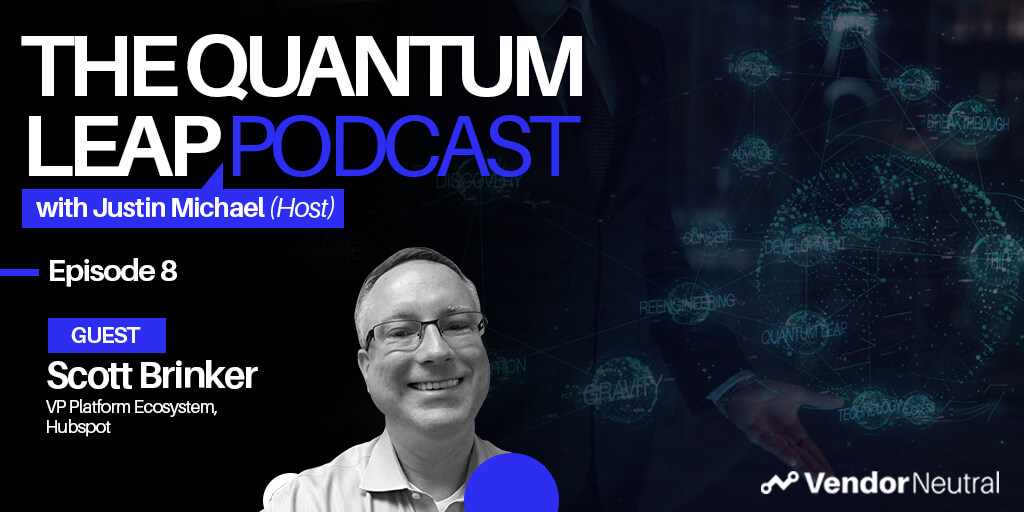 Tangible Ways to Digitally Transform Enterprise OrganizationsTangible Ways to Digitally Transform Enterprise Organizations
Tangible Ways to Digitally Transform Enterprise OrganizationsTangible Ways to Digitally Transform Enterprise Organizations -
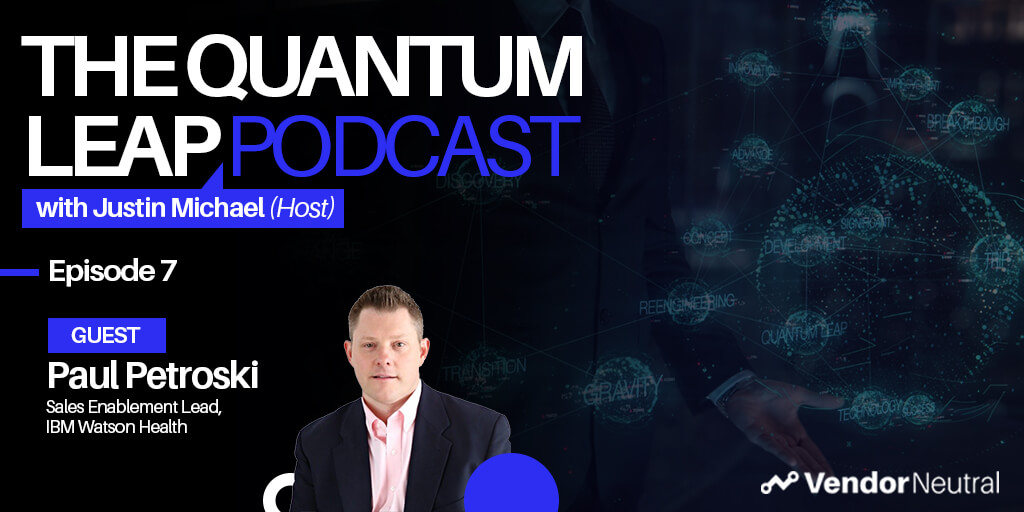 Quantum Leap Podcast Episode 7Quantum Leap Podcast Episode 7
Quantum Leap Podcast Episode 7Quantum Leap Podcast Episode 7 -
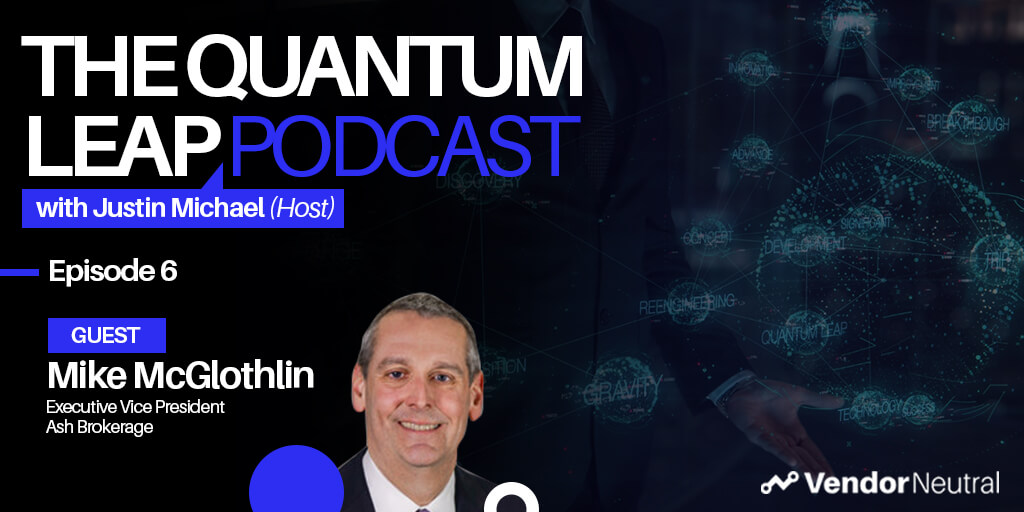 How Sales Technology is Making an Impact in the Financial SpaceHow Sales Technology is Making an Impact in the Financial Space
How Sales Technology is Making an Impact in the Financial SpaceHow Sales Technology is Making an Impact in the Financial Space -
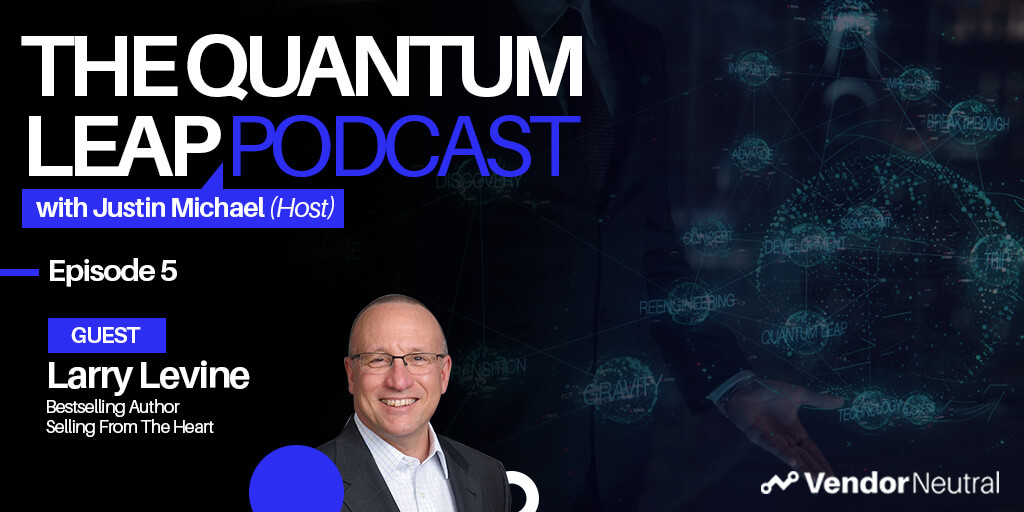 Quantum Leap Podcast Episode 5Quantum Leap Podcast Episode 5
Quantum Leap Podcast Episode 5Quantum Leap Podcast Episode 5 -
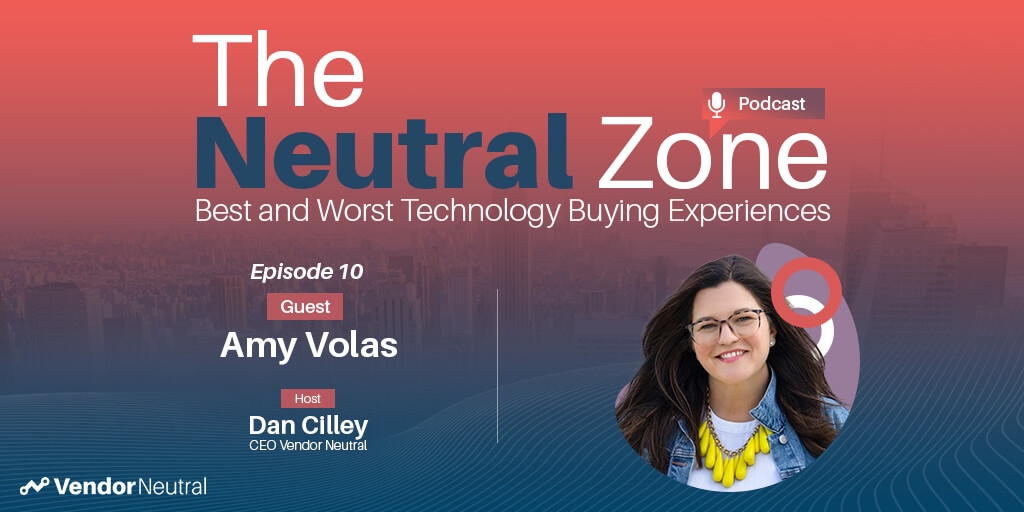 Clear View of Sales Episode 10 with Amy VolasClear View of Sales Episode 10 with Amy Volas
Clear View of Sales Episode 10 with Amy VolasClear View of Sales Episode 10 with Amy Volas -
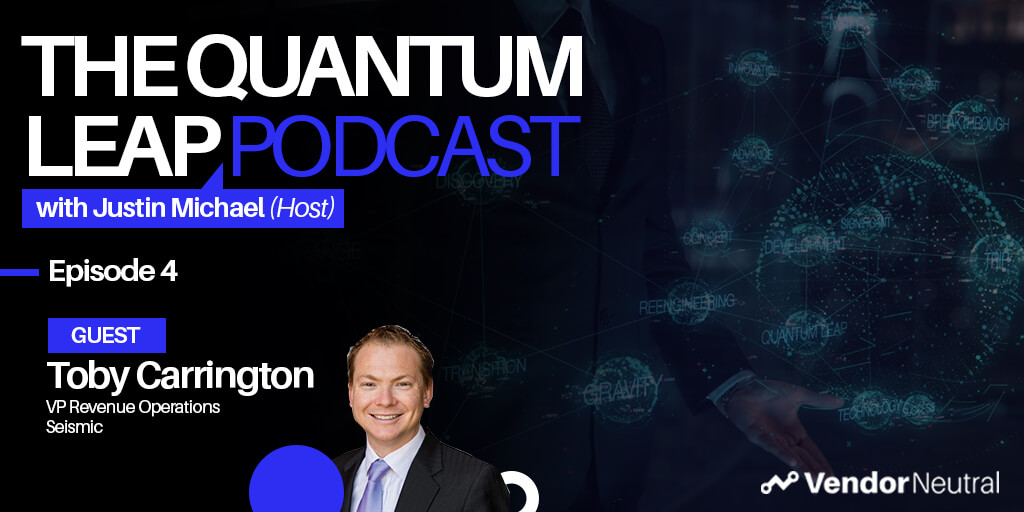 Quantum Leap Podcast Episode 4: Transforming Your Enterprise TechStack, The Future is Bright!Quantum Leap Podcast Episode 4: Transforming Your Enterprise TechStack, The Future is Bright!
Quantum Leap Podcast Episode 4: Transforming Your Enterprise TechStack, The Future is Bright!Quantum Leap Podcast Episode 4: Transforming Your Enterprise TechStack, The Future is Bright! -
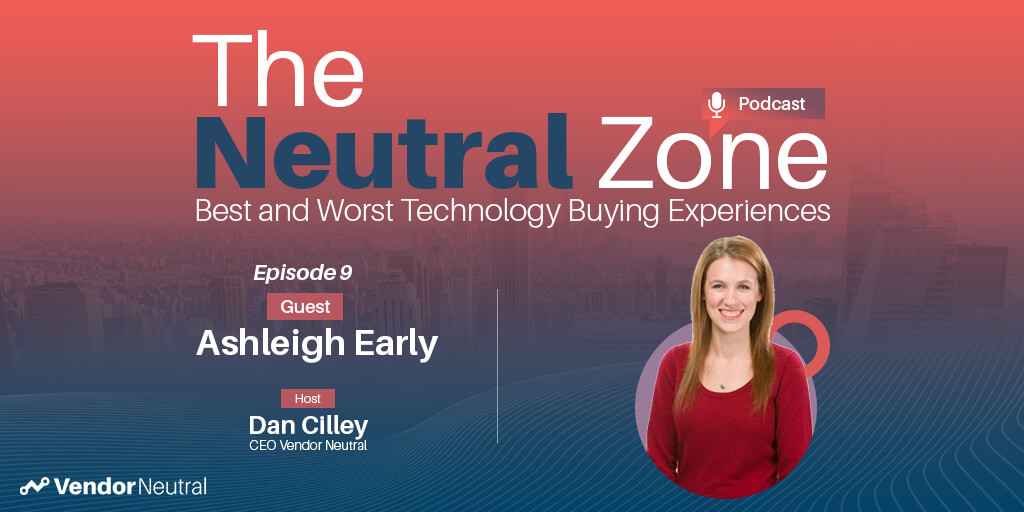 Clear View of Sales with Ashleigh Early:Clear View of Sales with Ashleigh Early:
Clear View of Sales with Ashleigh Early:Clear View of Sales with Ashleigh Early: -
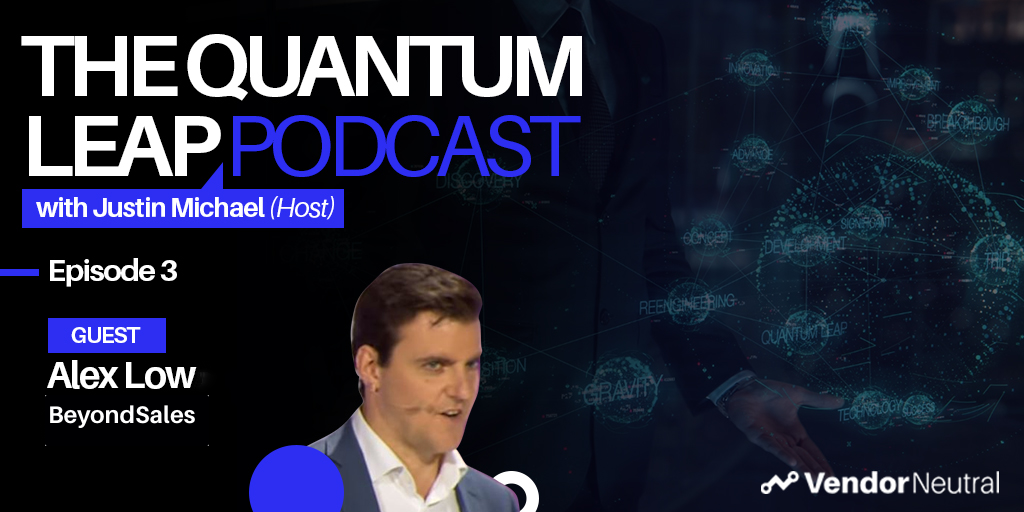 Quantum Leap Episode 3: Unlock the Mystery of Enterprise TransformationQuantum Leap Episode 3: Unlock the Mystery of Enterprise Transformation
Quantum Leap Episode 3: Unlock the Mystery of Enterprise TransformationQuantum Leap Episode 3: Unlock the Mystery of Enterprise Transformation -
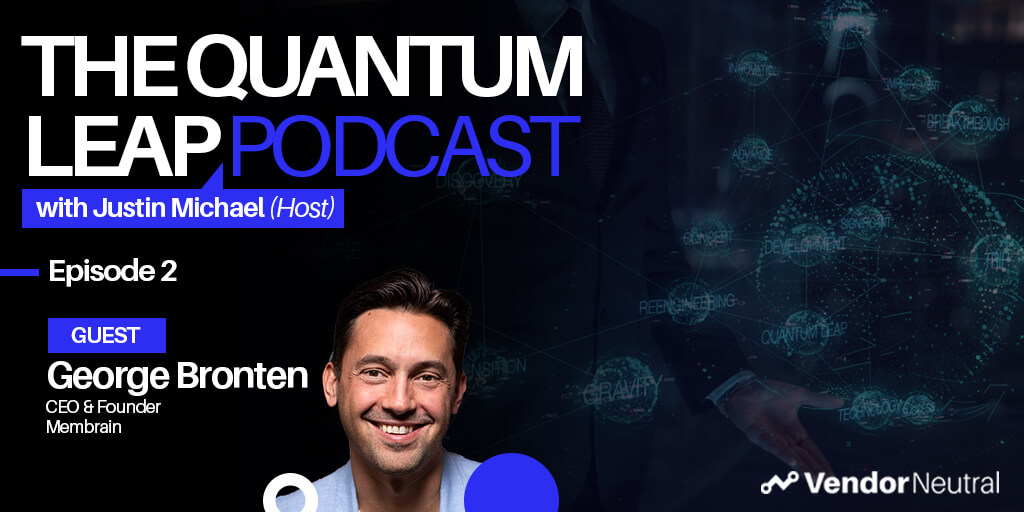 Quantum Leap Podcast Episode 2Quantum Leap Podcast Episode 2
Quantum Leap Podcast Episode 2Quantum Leap Podcast Episode 2 -
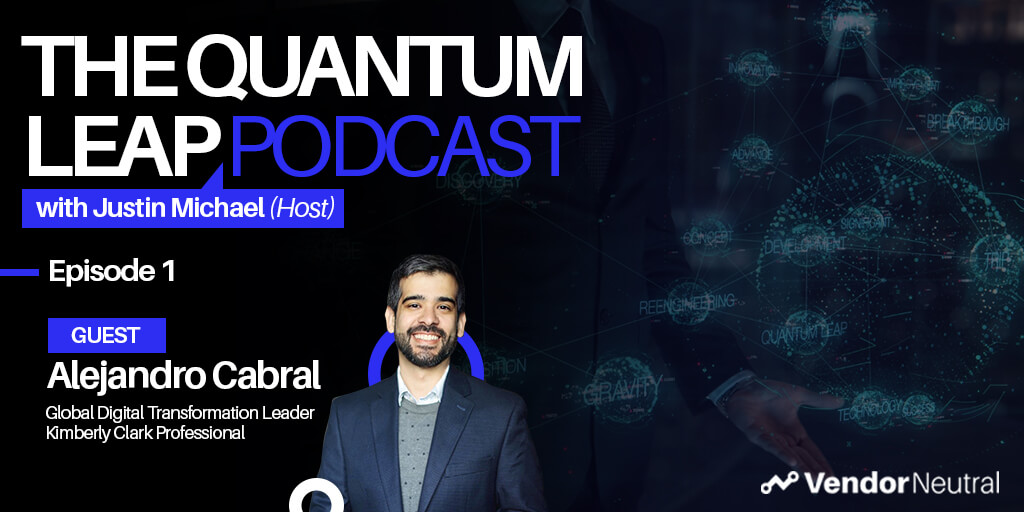 Quantum Leap Podcast Episode 1Quantum Leap Podcast Episode 1
Quantum Leap Podcast Episode 1Quantum Leap Podcast Episode 1 -
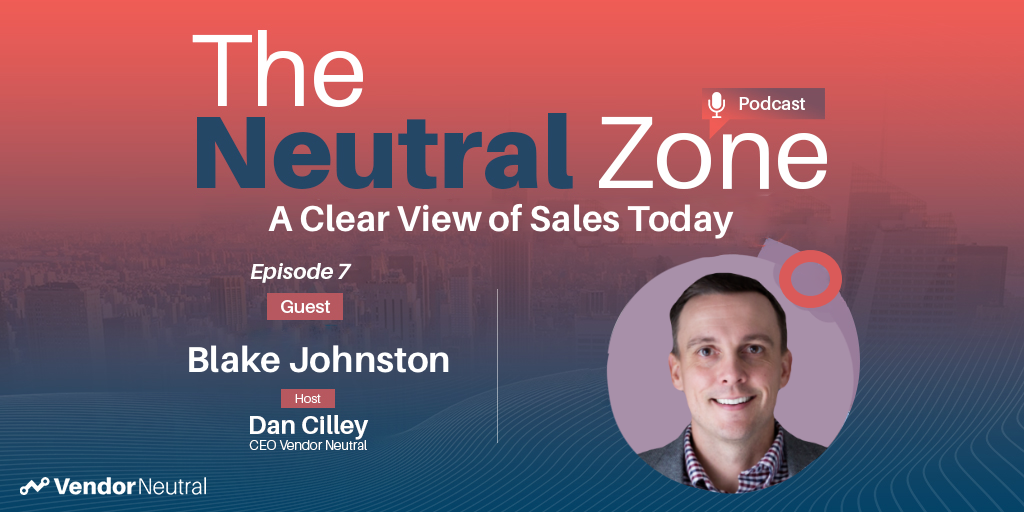 The Best & Worst B2B Technology Buying Experiences With Blake JohnstonThe Best & Worst B2B Technology Buying Experiences With Blake Johnston
The Best & Worst B2B Technology Buying Experiences With Blake JohnstonThe Best & Worst B2B Technology Buying Experiences With Blake Johnston -
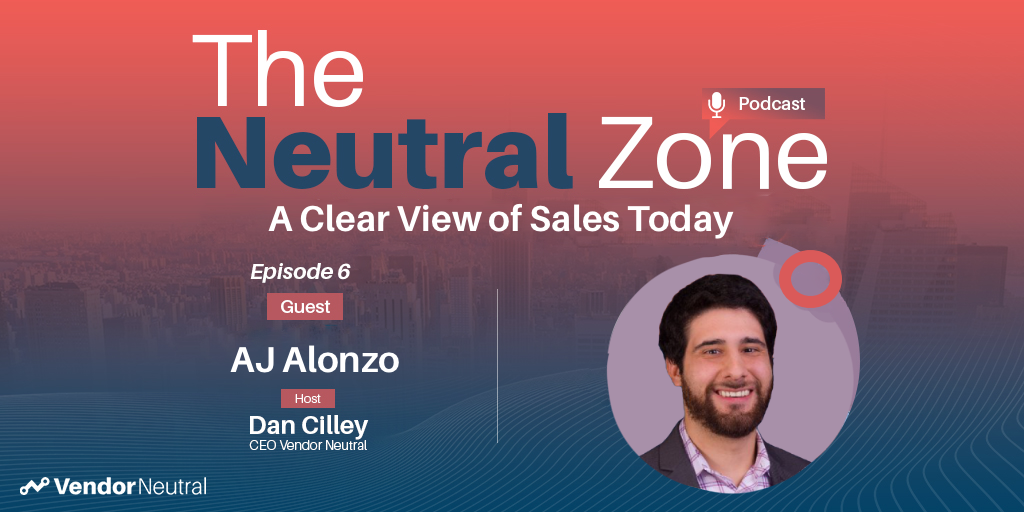 The Best & Worst B2B Technology Buying Experiences With AJ AlonzoThe Best & Worst B2B Technology Buying Experiences With AJ Alonzo
The Best & Worst B2B Technology Buying Experiences With AJ AlonzoThe Best & Worst B2B Technology Buying Experiences With AJ Alonzo -
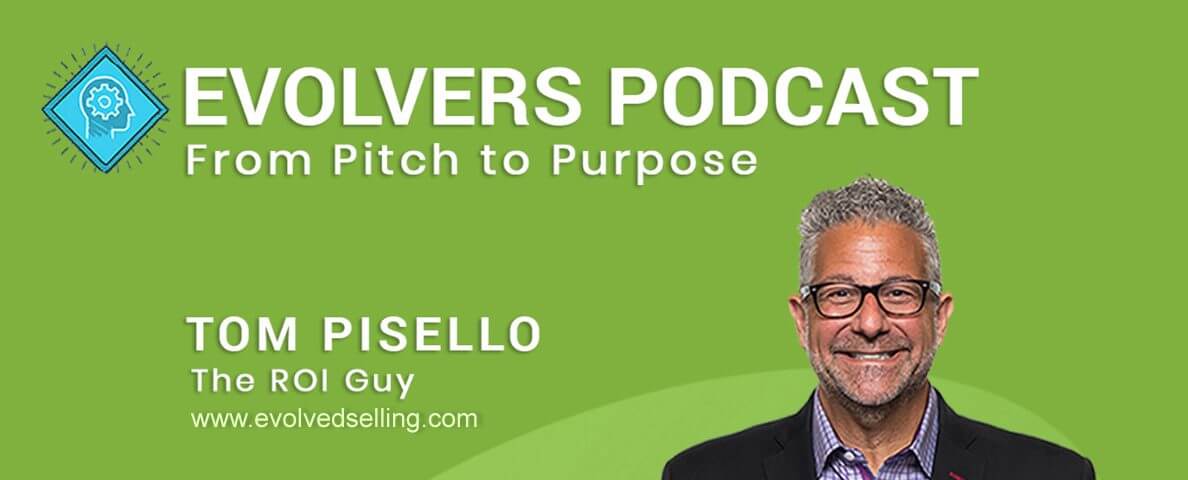 Evolvers Podcast: The Democratization of Sales Enablement? With Dan CilleyEvolvers Podcast: The Democratization of Sales Enablement? With Dan Cilley
Evolvers Podcast: The Democratization of Sales Enablement? With Dan CilleyEvolvers Podcast: The Democratization of Sales Enablement? With Dan Cilley -
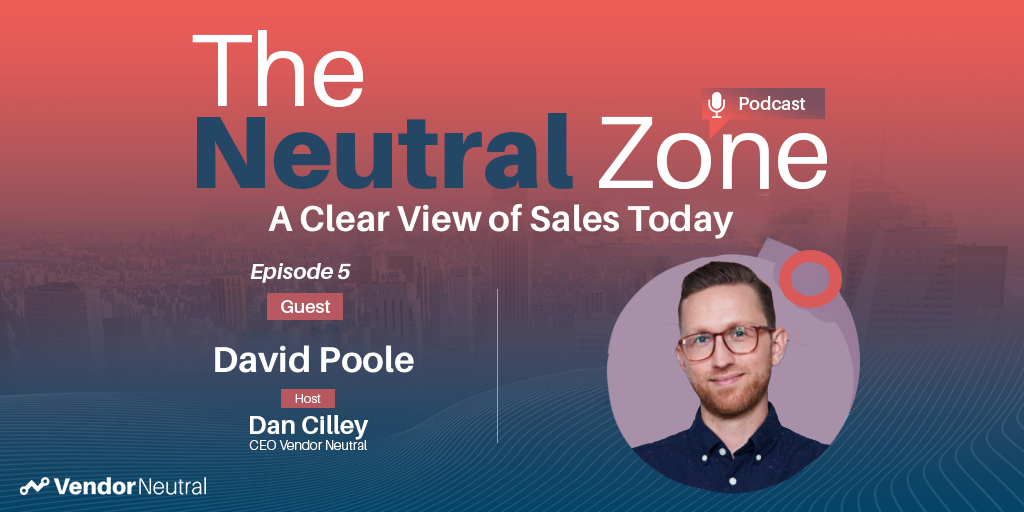 The Best & Worst B2B Technology Buying Experiences With David PooleThe Best & Worst B2B Technology Buying Experiences With David Poole
The Best & Worst B2B Technology Buying Experiences With David PooleThe Best & Worst B2B Technology Buying Experiences With David Poole -
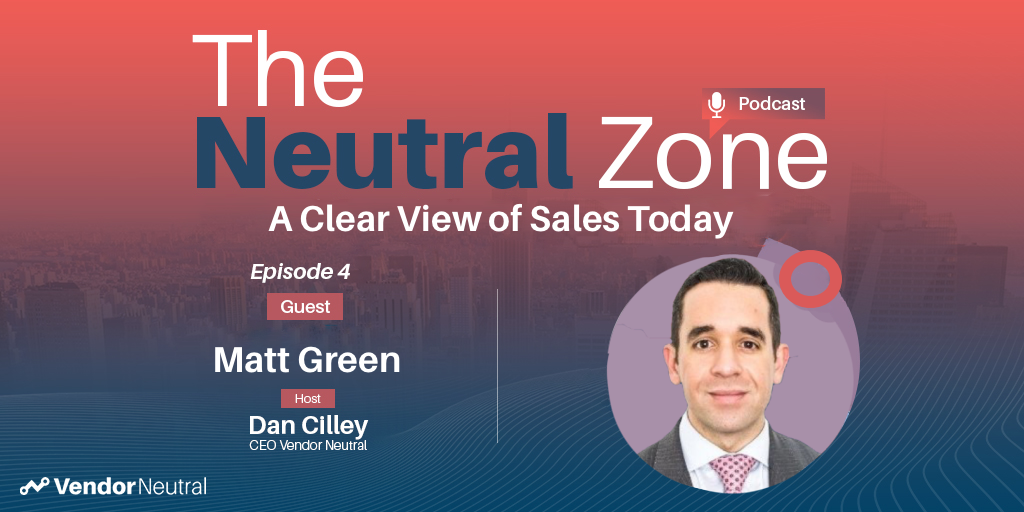 The Best & Worst B2B Technology Buying Experiences With Matt GreenThe Best & Worst B2B Technology Buying Experiences With Matt Green
The Best & Worst B2B Technology Buying Experiences With Matt GreenThe Best & Worst B2B Technology Buying Experiences With Matt Green -
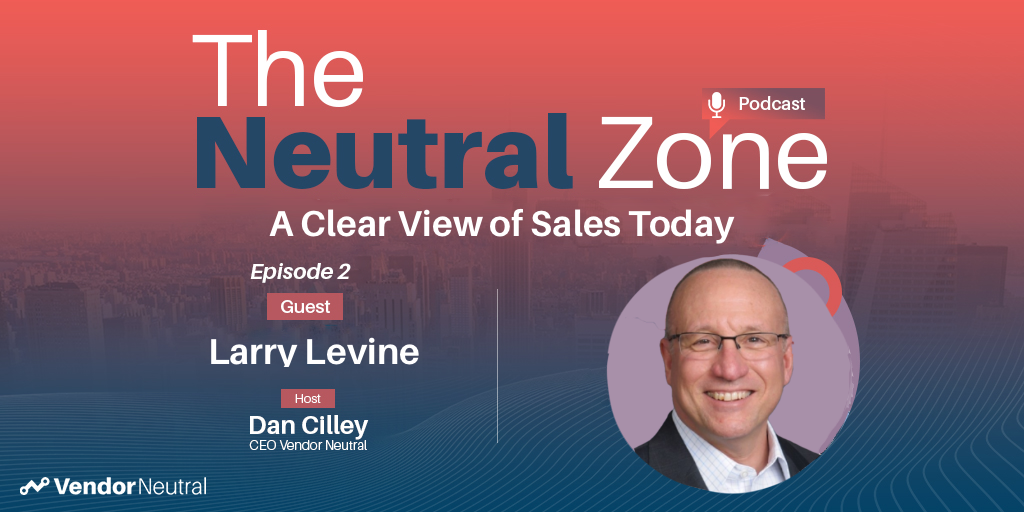 The Best & Worst B2B Technology Buying Experiences with Larry LevineThe Best & Worst B2B Technology Buying Experiences with Larry Levine
The Best & Worst B2B Technology Buying Experiences with Larry LevineThe Best & Worst B2B Technology Buying Experiences with Larry Levine -
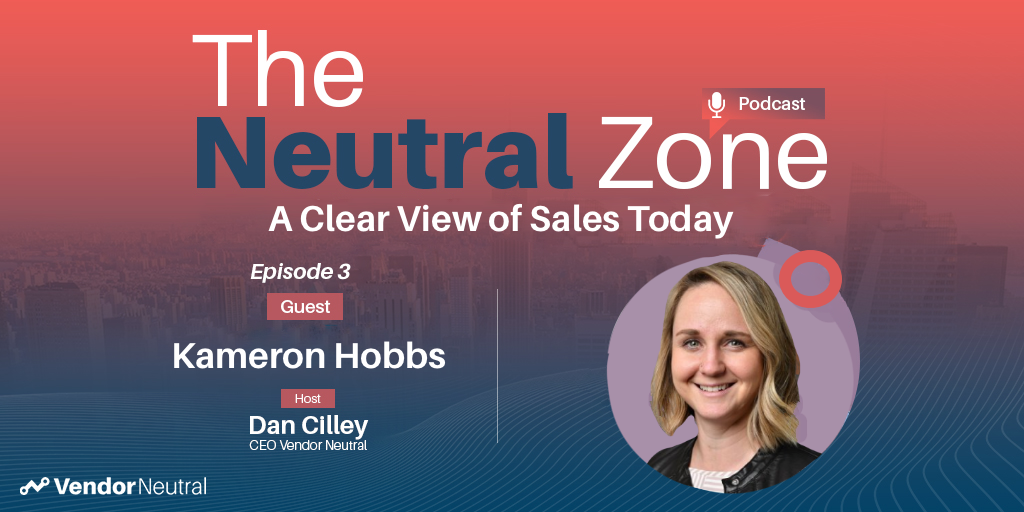 The Best & Worst B2B Technology Buying Experiences with Kameron HobbsThe Best & Worst B2B Technology Buying Experiences with Kameron HobbsVideo
The Best & Worst B2B Technology Buying Experiences with Kameron HobbsThe Best & Worst B2B Technology Buying Experiences with Kameron HobbsVideo -
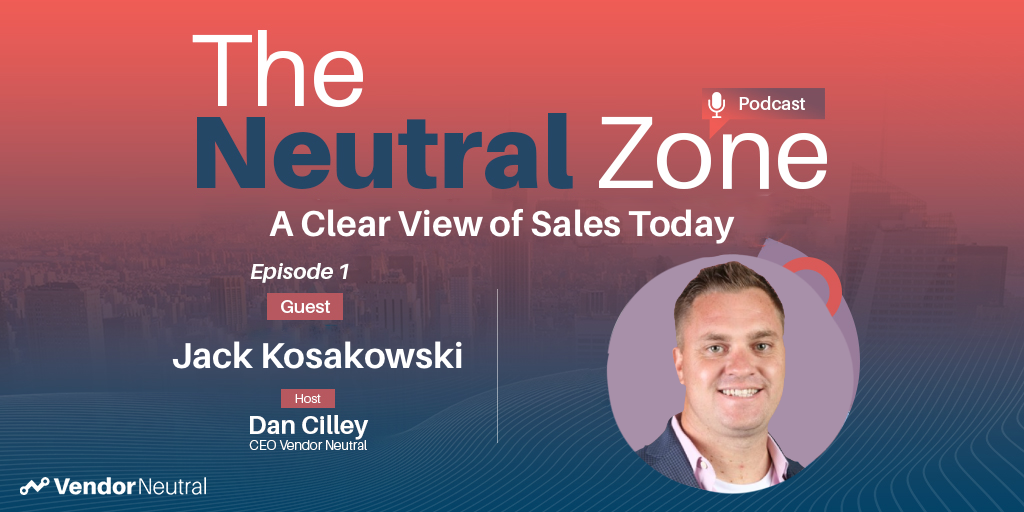 The Best & Worst B2B Technology Buying Experiences with Jack KosakowsiThe Best & Worst B2B Technology Buying Experiences with Jack KosakowsiPodcast
The Best & Worst B2B Technology Buying Experiences with Jack KosakowsiThe Best & Worst B2B Technology Buying Experiences with Jack KosakowsiPodcast
